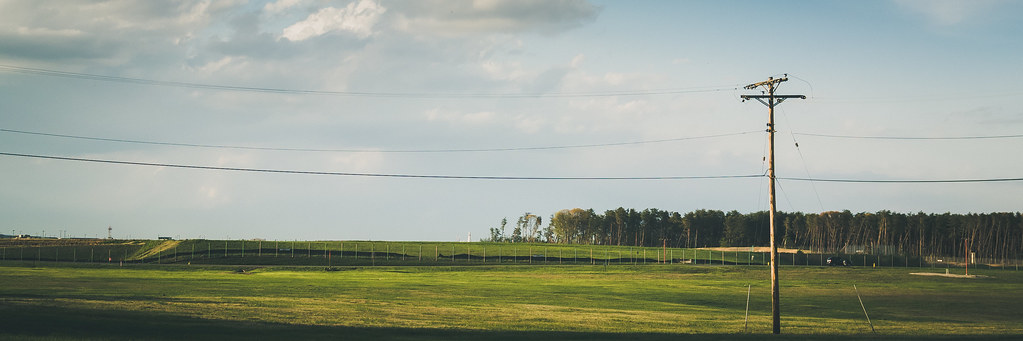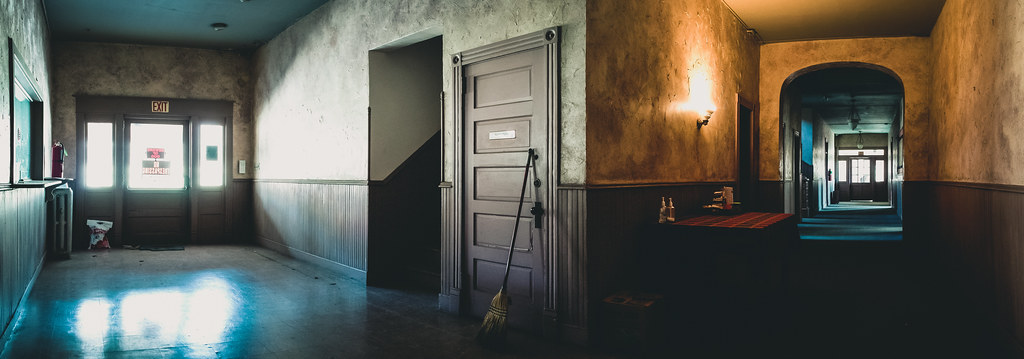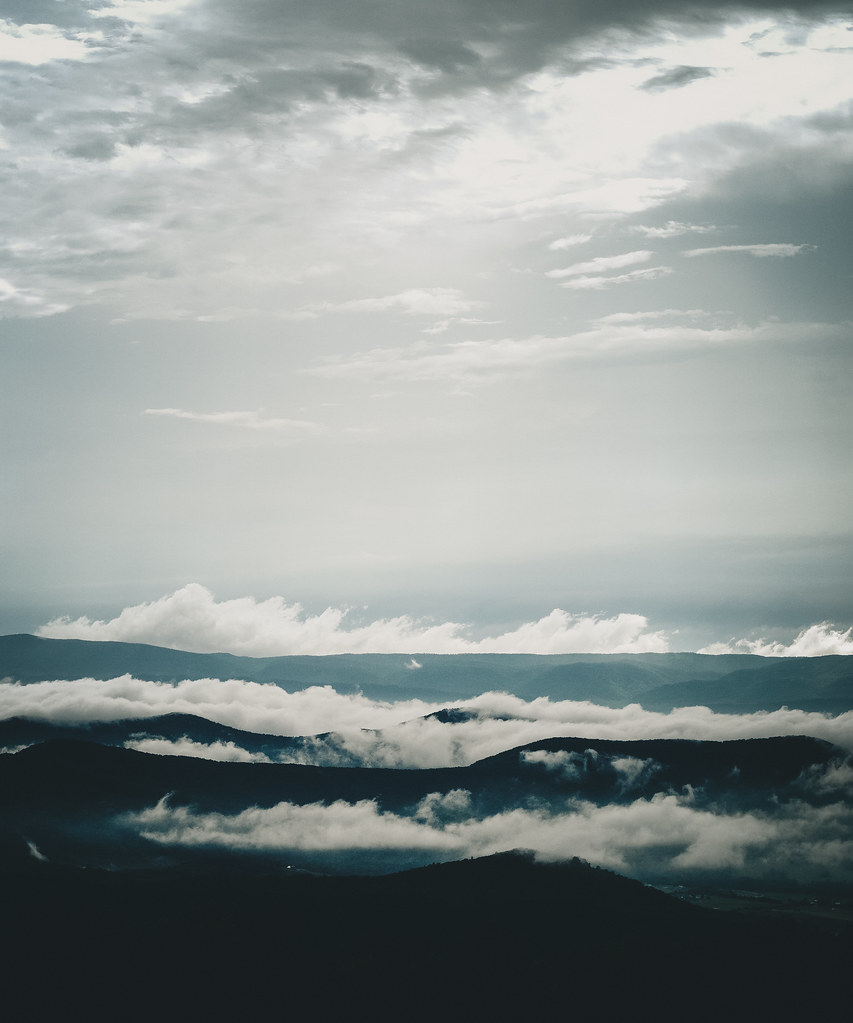Sometimes I can't help but wonder how or why some things become the industry standards they do. At the same time I also wonder what gene is hiding in my makeup that causes me to rebel so innately against the chosen standard, the conformity. Not because I see it as inherently "bad", but simply because I recognize it's what everyone else will be using. Rebellion by inexplicable nature.
I'm speaking of course of the 3:2 aspect ratio that has been the standard for some time now in the photographic world. Relatively few players in the camera market have ever dared to stray far from that globally accepted standard, and even in straying they did not do so to any extreme (namely Micro Four Thirds players Olympus and Panasonic with 4:3). This baffles me given the breadth of formats formerly accepted by the early film world, from 5:4 large formats to the glorious 6:6 medium format square. A video upload from the amazing folks at DigitalRevTV touched on this concept for me a little bit by accident when elaborating upon the availability of Full Frame for "cheap".
Unfortunately it is a difficult thing to implement in the current market of cameras available. 6:6 squares may be easily produced with simple cropping, and the live-view option of mirror-less camera systems permit composition of images with the square outright, but there is no easy way to generate a 6:2 image. Cropping an image into 6:2 omits so much vertical detail as to be too aggressive a crop, and panoramic stitching disturbs the intended focal length in which the image is meant to be captured. No real winning scenario. Which brings me back to my original gripe about the 3:2 standard aspect ratio exhibited by cameras today.
In the film days it was common for formats to vary, especially with larger format cameras. Different backs would hold different sizes and shapes of film, and as with the panoramic camera Kai adopts in the above video, entire camera systems were developed to capitalize on alternative formats. Yet in today's post-film world, the camera market is markedly absent of alternative formats. A single camera comes to mind which at least attempted to buck this trend to some degree, Panasonic's GH2, whose sensor was designed in a sort of squared-off diamond shape such that the 6:6 aspect ratio used extra photo sites on the top and bottom of the sensor, 3:2 and 16:9 used extra sites on the sides, and 4:3, its "native" aspect ratio, was a sort of happy middle between the two. The sensor actually possessed added pixels to accommodate the different formats, yet in subsequent generations (GH3 and GH4) this variable aspect ratio sensor was abandoned for a traditional design which simply cropped regions out. Arguably both methods function the same in the capacity to which Panasonic utilized it, however I saw such a step as moving toward a wider aspect ratio market in photography that, much to my dismay, was then abandoned.
From the bias of my very personal viewpoint on formats, aspect ratios have either been dictated by tradition or the most common aspect ratios of the screens on which we view photography and video. 3:2 has been long clung to from the days of massively commercialized 35mm film. 4:3 was the old standard aspect ratio of our TV screens and computer monitors, now replaced by 16:9 with cheap consumer HD TVs and flat panel monitors. All formats dictated by established trends in other consumer markets. Large and medium format photography, the progenitors of 5:4 and 6:6, having always been tools of artists and pioneers of the craft, have never been fairly represented in the digital photography world, always relegated to a software crop either in or out of camera, and the truly experimental, pioneering formats such as 6:2 seem like they will never be realistically implemented in the digital photography marketplace.
Arguably, my analysis of the situation is completely off-kilter with the ease and accuracy of panoramic stitching algorithms. Admittedly, paired with adaptive wide angle distortion corrections in Adobe CC, we're closer now than ever before to having the magic of that 6:2 aspect ratio readily available. Some may argue "Why stop there, panoramic stitching opens up a 360 degree world", for which I have no argument as I can't deny that some may find appeal in such enormously all-encompassing images. This all hearkens back to personal taste, and given my photographic methods are largely an endeavor of intelligent omission to create maximum impact, the inclusion of every detail in the frame is not conducive to methods I am comfortable with to create a strong image (although I have to admit the 360 degree panorama produced "planets" I see around are compelling as all hell).
In the end, I find myself eternally wishing for a digital camera that defies commercial norms and adopts a native aspect ratio outside the 3:2 standard. I've long wished to see a sort of mirror-less, TLR-alike offering, a digital camera with a 6:6 square sensor and waist-level viewfinder, something as simple as a square screen built into the top of a box with a flip-open shield to block the sun. The potential of a square format sensor, especially, makes me salivate - the imaging circles of all conventionally produces lenses is exactly that, a circle, and a square format sensor could capitalize on every last inch, touching the edges in such a way as to produce the most attractive, natural vignetting imaginable. I've always dreamed of Olympus producing such a camera, with their strong assortment of sharp, fast prime, perfect in size and weight for a camera system of this variety. At the same time, I recognize the underwhelming market demand for such a product, and the financial suicide such an endeavor could likely be.
Should such a system ever be pursued, I see it finding its foothold in the Instagram community. The digital TLR system of my dreams already hearkens back to antiquated photographic technology, and the novelty of antique feel and operation. Similarly, the Instagram community exhibits appreciation of much of the same, having popularized faux vintage film filters to the degree that a million knockoff photo editing applications have arisen to command market share of the faux film crowd. The other appeal of Instagram is the immediacy of content sharing, so any such camera would likely require connection via WiFi or Bluetooth to a cellphone, or if exceptionally ambitious boast a SIM card slot for a data connection of its own to allow an in-camera interface to share photos instantly with the Instagram community. While not a particularly avid nor eager member of the Instagram community, I have to admit that the existence of such a camera would find me contributing to the community far more. Regularly, on the daily. Much as I do with my current Olympus gear set, quickly editing photos in-camera, sending them to my cellphone and then uploading them to Facebook, I would do the same, only with greater ease and fervor, with such an intuitive little box. On my regular hikes alone, people would insist I stop sharing images for sake of sparing their news feeds the spam.
In the mean time my best hope is in learning new techniques with stitched photographs to produce an low distortion image retaining the qualities of the original lens' field of view. Lately that has meant many vertically panning stitches to produce 5:4 and 6:6 images with no crop. The change in field of view, in practice, has produced an almost medium format look to images taken with that method, which absolutely encourages further pursuit of it. Unfortunately this is only realistically doable with nature and landscape, as the distortion produced, even with Adobe Photoshop CC's adaptive wide angle algorithms, is a bit more than I find acceptable for my photography.
On any camera gear related forum, threads are always chock full of people with ridiculous demands of cameras and the price points at which they are offered. Everyone gushes over Full Frame made smaller, fast primes made faster and cleaner images at higher ISO values on smaller sensors. I'm fond of Fuji and their X-series of cameras for putting into practice the kind of mentality that leads me to want a 6:6 square (or really anything other than 3:2) sensor. Fuji took technology that had already been around and implemented the same way for a decade and changed one simple thing - the color filter. Instead of sticking with the status quot Bayer patterned color array, they devised something new and of their own, the X-Trans color filter. By simply adjusting the pixel-by-pixel layout of the color filter their created a line of APS-C cameras nearly able to compete with Full Frame in regard to quality of grain at higher ISO values. While it took some time for Adobe to accommodate the qualities of that array into their software for the development of RAW files, the technology is now accepted widely and is a vast improvement over traditional Bayer designs. Not new technology, simply alternative implementation of what already existed. In that respect, I find my desires for something akin to a square sensor Micro Four Thirds-size camera a little more reasonable than the typical demands on camera forums. Especially with the Micro Four Thirds mirror less world, the lenses are the right size and weight already, the sensor is all that requires the tweaking (well, that and flange distance, I suppose).
Perhaps someone will pick up on this idea one day. Perhaps I'll have to learn how to construct such a camera myself. Any investors in the audience?








No comments:
Post a Comment